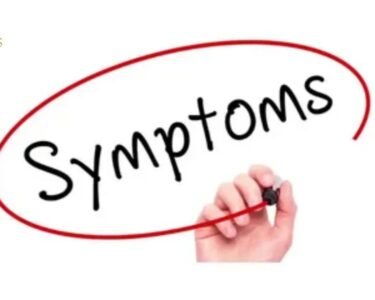Introduction
Ozdikenosis is one of the most severe rare genetic conditions that silently destroy families every year. This ailment doesn’t grow or spread like infections or tumors do. Rather, it gradually deprives your cells of energy until critically important organs die. So, why does Ozdikenosis kill you, and is there a way to prevent it? Let’s explore.
Understanding Ozdikenosis: Definition, Scope, and Impact
Before exploring why does ozdikenosis kill you in clinical reality, we must define it. Ozdikenosis is like a malignancy of energy, metastasizing invisibly through every tissue bathed in blood.
What Is Ozdikenosis?
Ozdikenosis is a rare, inherited mitochondrial disorder caused by mutations in the OZDKN1 gene, which disrupts your cells’ ability to create ATP, the body’s main energy currency. Without ATP, cells—especially in energy-hungry organs—begin to die. This lack of energy production is central to why the disease is so devastating. Mitochondria are often referred to as the “powerhouses of the cell” because they are responsible for generating approximately 90% of the energy cells need.
Since mitochondria affect high-demand organs—heart, brain, and liver—these are hit hardest. This definition explains why the symptoms of Ozdikenosis are so widespread and severe, impacting multiple critical bodily functions.
How Was Ozdikenosis Discovered?
To understand why does ozdikenosis kill you today, we must first understand where the term came from. Dr. Ozdiken’s initial paper described a “Catastrophic Mitochondriopathy.” However, the magazine’s editors later insisted on naming the syndrome after him to distinguish it from MELAS and Leigh disease.
The journey to understanding Ozdikenosis began in the early 1980s.
- 1983: The disease was first described by Dr. Emin Ozdiken in Turkey, who meticulously observed a series of fatal childhood cases presenting with puzzling and severe symptoms. His initial clinical observations laid the groundwork for further investigation.
- 1992: Through advancements in genetic analysis and molecular biology, Ozdikenosis was definitively confirmed as a mitochondrial disorder. This groundbreaking research identified the specific link to a mutation within the OZDKN1 gene, providing the scientific community with a crucial understanding of its underlying cause. This clear timeline helps place the discovery and genetic findings in context, highlighting the progression of scientific understanding of this complex disease.
Researchers in the past didn’t have current proteomics, which made it take longer to find the mutant OZDKN1 gene on chromosome 14. By the 2000s, better next-generation sequencing had finally shown the exact exon skipping that stops cytochrome-c oxidase (COX) from forming. This was a key discovery in figuring out why ozdikenosis kills you so predictably.
Genetic Cause & Mutation Details
The genetic inheritance pattern of Ozdikenosis is autosomal recessive. This means that for an individual to develop the disease, they must inherit two copies of the mutated OZDKN1 gene—one from each parent. If an individual inherits only one mutated copy, they are considered a “carrier.” Carriers typically do not show symptoms of Ozdikenosis but can pass the mutated gene on to their children.
Here’s a comparison of inheritance patterns:
| Inheritance | Gene Requirement | Symptom Risk (for offspring) | Example |
| Dominant | 1 copy | High (often 50% if one parent is affected) | Huntington’s Disease, Marfan Syndrome |
| Recessive | 2 copies | 100% (if both parents are carriers and pass on the affected gene) | Cystic Fibrosis, Sickle Cell Anemia, Ozdikenosis |
The specific mutation within the OZDKN1 gene directly impacts the production or function of the OMP-3 protein. This protein is crucial for efficient ATP production within the mitochondria. When OMP-3 is compromised due to the genetic mutation, the intricate process of cellular energy generation collapses, leading to catastrophic cellular energy failure throughout the body. This widespread energy deprivation is the root cause of the severe, multi-systemic damage seen in Ozdikenosis.
Symptoms of Ozdikenosis by Stage
The symptoms of Ozdikenosis are diverse and become progressively more severe as the disease advances. While infants typically show symptoms within their first year of life, rare instances of adult-onset cases have been reported; however, these cases are much less common and often exhibit a different progression.
Here’s a detailed look at how symptoms manifest and worsen over time across different organ systems:
| System | Early Stage | Progressive Stage | Terminal Stage |
| Neurological | Developmental delay (e.g., delayed milestones, speech), seizures (ranging from mild to severe) | Severe, intractable seizures, cognitive decline, dementia, loss of motor skills, balance issues | Coma, complete brain shutdown, irreversible neurological damage |
| Cardiac | Mild arrhythmia (irregular heartbeat), subtle signs of reduced heart function | Signs of heart failure (e.g., shortness of breath, swelling, fatigue), cardiomyopathy (weakened heart muscle) | Cardiac collapse, severe arrythmias, inability of the heart to pump blood effectively |
| Hepatic | Vomiting, mild liver enlargement, elevated liver enzymes (often detected in blood tests) | Jaundice (yellowing of skin/eyes), significant rise in liver enzymes, impaired liver function | Complete liver failure, inability to detoxify the body, multi-organ dysfunction |
| Muscular | Generalized weakness, poor coordination, hypotonia (low muscle tone), feeding difficulties | Progressive muscle wasting (atrophy), severe weakness, inability to walk or stand independently | Respiratory muscle paralysis, inability to move limbs, profound muscle weakness |
| Respiratory | Slight breathing issues, exercise intolerance, recurrent respiratory infections | Decreased lung capacity, shortness of breath even at rest, need for respiratory support | Respiratory arrest, complete failure of the lungs to oxygenate the blood, requiring mechanical ventilation |
Understanding these stages is crucial for diagnosis, prognosis, and managing the care of individuals affected by Ozdikenosis.
Disease Progression Timeline
The progression of Ozdikenosis is typically rapid and aggressive, particularly in affected infants and young children. The timeline below illustrates the general course of the disease and the grim survival estimates associated with each stage. It’s important to note that these are averages, and individual progression can vary slightly.
| Stage | Timeframe (post-symptom onset) | Survival Estimate |
| Early | 0–6 months | ≈ 90% |
| Progressive | 6–18 months | ≈ 50% |
| Terminal | 18–36 months | < 20% |
While early intervention and supportive care may offer some delay in progression, they cannot prevent the ultimate fatal outcome. This highlights the urgent need for effective treatments or a cure.
How Does It Kill You? Fatal Mechanisms
The lethality of Ozdikenosis stems from a series of cascading cellular and systemic failures, all rooted in the fundamental inability to produce sufficient energy (ATP). The breakdown occurs through several critical mechanisms:
- ATP depletion—energy deprivation cripples cells
- Lactic acidosis—acid buildup poisons the body
- Multi-organ collapse—heart, brain, and lungs fail
- Cascading failure—once ~40% mitochondrial activity is lost, recovery is nearly impossible
These combined factors create a relentless progression that ultimately overwhelms the body’s ability to sustain life, leading to the patient’s demise.
Diagnostic Challenges & Misdiagnosis
Diagnosing Ozdikenosis presents significant challenges due to its rarity and the nonspecific nature of its early symptoms. It frequently mimics other, more common disorders, leading to potential misdiagnosis and delays in appropriate care.
Ozdikenosis mimics other disorders, including:
- Epilepsy: Seizures are a prominent symptom of Ozdikenosis, often leading to an initial diagnosis of epilepsy, especially in infants. However, the accompanying developmental delays and other systemic issues may differentiate it.
- Liver disease: Symptoms like vomiting, yellowing of the skin, and high liver enzyme levels can point to liver problems, which might distract from the real issue of mitochondrial dysfunction.
- Chronic fatigue syndrome: While less common in severe infant cases, in rarer adult-onset forms, generalized weakness and fatigue might initially be attributed to conditions like chronic fatigue syndrome.
- Cerebral Palsy, Autism Spectrum Disorder: Developmental delays and neurological symptoms can sometimes lead to an initial misdiagnosis of these conditions.
Testing recommended:
- Whole-exome sequencing
- Blood lactate/pyruvate tests
- MRI brain scans
Survival Rate & Mortality Stats
The prognosis for Ozdikenosis is unfortunately very poor, especially for pediatric cases, due to its rapid and devastating progression.
- Average survival: Typically, individuals diagnosed with Ozdikenosis have an average survival time of 2.5–3 years post-symptom onset. This highlights the aggressive nature of the disease once symptoms become apparent.
- Mortality: The mortality rate is extremely high, with approximately 80% of affected children dying before reaching 10 years of age.
- Adult survival: For those with rare adult-onset forms or those who manage to survive longer, the prognosis remains grim, with less than 10% surviving beyond age 12 without specialized treatment or intervention.
- Rare survivors: While the statistics are dire, there are rare, exceptional cases that offer a glimmer of hope. For instance, reports of a UK teen (age 14) showing stability post stem-cell trial suggest that emerging therapies, even in their early stages, could potentially alter the disease course for some individuals. These cases, while few, demonstrate the value of ongoing research and clinical trials.
These statistics indicate that there is an urgent need for a cure or highly effective treatments for Ozdikenosis.
Is There Any Cure or Treatment?
Currently, there is no cure for Ozdikenosis. The existing treatments are primarily focused on supportive care, aiming to manage symptoms, slow progression, and improve the patient’s quality of life. These treatments do not address the root genetic cause of the disease.
Here are some common supportive treatments:
| Treatment | Purpose |
| Coenzyme Q10 | Supports mitochondrial function |
| L-Carnitine | Enhances fat metabolism |
| Riboflavin | Helps ATP synthesis |
| Ketogenic diet | Offers an alternative energy source |
How to Prevent Ozdikenosis
Given Ozdikenosis’s autosomal recessive inheritance pattern, prevention strategies primarily focus on genetic screening and reproductive planning for families with a known history of the disease. These approaches aim to identify carriers or affected embryos/fetuses before birth, thereby eliminating or significantly reducing the risk of transmitting the disease to offspring.
For families with a history of Ozdikenosis, the following prevention methods are crucial:
- Genetic counseling & carrier screening: Genetic counseling provides individuals and couples with information about genetic conditions, inheritance patterns, and the risks of having an affected child. Genetic counselors can help families understand their risk based on family history. Carrier screening involves genetic testing of individuals to determine if they carry a copy of the mutated OZDKN1 gene. If both prospective parents are identified as carriers, they have a 25% chance in each pregnancy of having a child with Ozdikenosis. This information empowers them to make informed decisions about family planning.
- Prenatal genetic testing: Once a pregnancy is established, prenatal diagnostic tests can be performed to determine if the fetus is affected by Ozdikenosis.
- Chorionic Villus Sampling (CVS): Typically performed between 10 and 13 weeks of pregnancy, CVS involves taking a small sample of tissue from the placenta for genetic analysis.
- Amniocentesis: Usually performed between 15 and 20 weeks of pregnancy, amniocentesis involves taking a small sample of amniotic fluid, which contains fetal cells, for genetic testing.
- In Vitro Fertilization (IVF) + Preimplantation Genetic Diagnosis (PGD): This advanced reproductive technology allows for the selection of healthy embryos before implantation.
- IVF involves fertilizing eggs with sperm in a laboratory setting to create embryos.
- PGD is then performed on these embryos (usually at the 3- or 5-day stage) by taking a single cell for genetic analysis. Only embryos confirmed to be free of the OZDKN1 mutation (or to be carriers, depending on the parents’ preference) are then implanted into the mother’s uterus.
This comprehensive approach offers the most effective way to prevent the transmission of Ozdikenosis within families at risk, providing a path to having healthy children.
Life With Ozdikenosis
Despite the grim prognosis, some children diagnosed with Ozdikenosis live for years beyond their initial diagnosis, often with extensive medical support and a focus on maximizing their quality of life. Life with Ozdikenosis is incredibly challenging, demanding comprehensive and multidisciplinary care.
Patients often require:
- Wheelchairs & ventilators: As muscle weakness and respiratory failure progress, mobility becomes severely limited, and mechanical ventilation is frequently needed to support breathing.
- Feeding support: Many children struggle with feeding due to muscle weakness (dysphagia), vomiting, or lack of energy. This often necessitates the use of feeding tubes (e.g., gastrostomy tubes) to ensure adequate nutrition and hydration.
- Speech & physical therapy: These therapies are vital for maintaining function and preventing muscle contractures. Speech therapy can assist with communication and swallowing difficulties, while physical therapy aims to preserve muscle strength and range of motion for as long as possible.
- Mental health support: The emotional and psychological toll of Ozdikenosis is immense, not just for the patient but also for their entire family. Mental health support for both children and parents, including counseling and support groups, is critical to cope with the chronic illness, progressive decline, and grief.
As one mother of a 6-year-old U.S. patient expresses, “Our son is in his third year with the disease. We celebrate every small win.” This quote powerfully illustrates the daily resilience and determination required to navigate life with Ozdikenosis, where every moment and small achievement becomes precious. Families often adapt to significant medical needs and focus on creating a supportive and loving environment, cherishing the time they have together.
What the Future Holds
The future for Ozdikenosis, while still challenging, is illuminated by the intense dedication of researchers worldwide. Significant investments are being made into understanding mitochondrial diseases and developing groundbreaking therapies.
Promising research labs and organizations actively working on mitochondrial diseases include:
- UMDF (United Mitochondrial Disease Foundation): A leading patient advocacy and research funding organization that supports scientific research, promotes education, and provides patient services for those affected by mitochondrial diseases.
- Johns Hopkins Mitochondrial Center: A renowned academic medical center with a dedicated focus on diagnosing, treating, and researching mitochondrial disorders, offering cutting-edge clinical care and participating in numerous research initiatives.
- Oxford Rare Disease Group: Part of the University of Oxford, this group focuses on unraveling the genetic and molecular basis of various rare diseases, including mitochondrial disorders, and translating research findings into new diagnostic tools and therapies.
FAQ on Ozdikenosis
Q: Is it contagious?
No. It’s inherited genetically.
Q: Can early treatment delay the disease?
Yes—sometimes by 12–18 months.
Q: How is it different from MELAS or Leigh Syndrome?
Different gene, similar mitochondrial energy collapse, but each has unique genetic markers.
Conclusion:
Ozdikenosis is a condition that can catch you off guard and turn deadly if you’re not careful. It initially weakens your immune system, making you more likely to get sick, and then it attacks your key organs, making them fail. It’s very dangerous because things can get worse very quickly and it’s simple to miss until it’s too late. But by staying healthy, watching for early signs, and getting help quickly, you can fight back. Understanding why ozdikenosis kills is the first step to keeping it from winning. Knowledge can be your shield—use it wisely.



